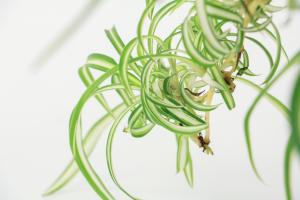Can a Lime Tree Be Planted in Florida?
Lime trees are a popular choice for tropical fruit enthusiasts. They are known for their fragrant blooms and juicy, acidic fruit. However, not all regions are suited for growing lime trees. If you live in Florida, you may be wondering if it's possible to plant a lime tree on your property. The short answer is yes, but there are a few things to consider before you start digging.
Choosing the Right Variety
First and foremost, it's important to choose the right variety of lime tree for the Florida climate. While all limes prefer warm temperatures and sunny conditions, some are more well-suited to Florida's specific growing conditions. Here are a few of the most popular lime tree varieties for Florida:
Persian Lime: This is the most common lime tree variety found in Florida. It produces seedless, juicy fruit with a bright green rind. Persian limes are hardy and can survive mild winters.
Key Lime: Key limes are smaller and more acidic than Persian limes. They are often used in cooking and cocktail-making. Key lime trees are less cold-tolerant than Persian limes and need to be protected during freezes.
Tahitian Lime: Tahitian limes have a floral aroma and are less acidic than other lime varieties. They are also less cold-tolerant than Persian limes and may require protection during freezes.
Prepping the Soil
Once you've chosen your lime tree variety, it's time to prep the soil. Limes prefer well-draining, slightly acidic soil. If your soil is heavy and clay-like, it's best to amend it with organic matter such as compost or peat moss. You may also need to adjust the soil pH to make it more acidic. A pH between 6.0 and 7.0 is ideal for lime trees.
Planting and Care
When you're ready to plant your lime tree, dig a hole that is twice as wide and just as deep as the root ball. Make sure the tree is planted at the same depth it was in its container. Water the tree thoroughly after planting, and add a layer of mulch around the base to help retain moisture.
Once your lime tree is established, it will require regular watering and fertilization. During the first year, water deeply once a week. After that, you can water once every two weeks, depending on rainfall. Lime trees need regular fertilization with a balanced fertilizer that contains nitrogen, phosphorus, and potassium.
Pruning is also important for lime trees. Remove any dead, diseased, or crossing branches, and shape the tree as desired. Lime trees can be pruned in the winter or early spring.
Pest and Disease Control
Lime trees can be prone to a few pests and diseases, including citrus greening disease, citrus canker, and spider mites. To prevent these issues, make sure to keep your tree healthy and well-watered. You can also use organic pest control methods such as neem oil to control spider mites and other pests.
Conclusion
If you live in Florida, you can definitely plant a lime tree on your property. Just make sure to choose the right variety, prep the soil properly, and provide regular care and maintenance. With a little bit of effort, you can enjoy fresh, juicy limes right from your own backyard.

 how many times do yo...
how many times do yo... how many planted tre...
how many planted tre... how many pine trees ...
how many pine trees ... how many pecan trees...
how many pecan trees... how many plants comp...
how many plants comp... how many plants can ...
how many plants can ... how many plants and ...
how many plants and ... how many pepper plan...
how many pepper plan...
































